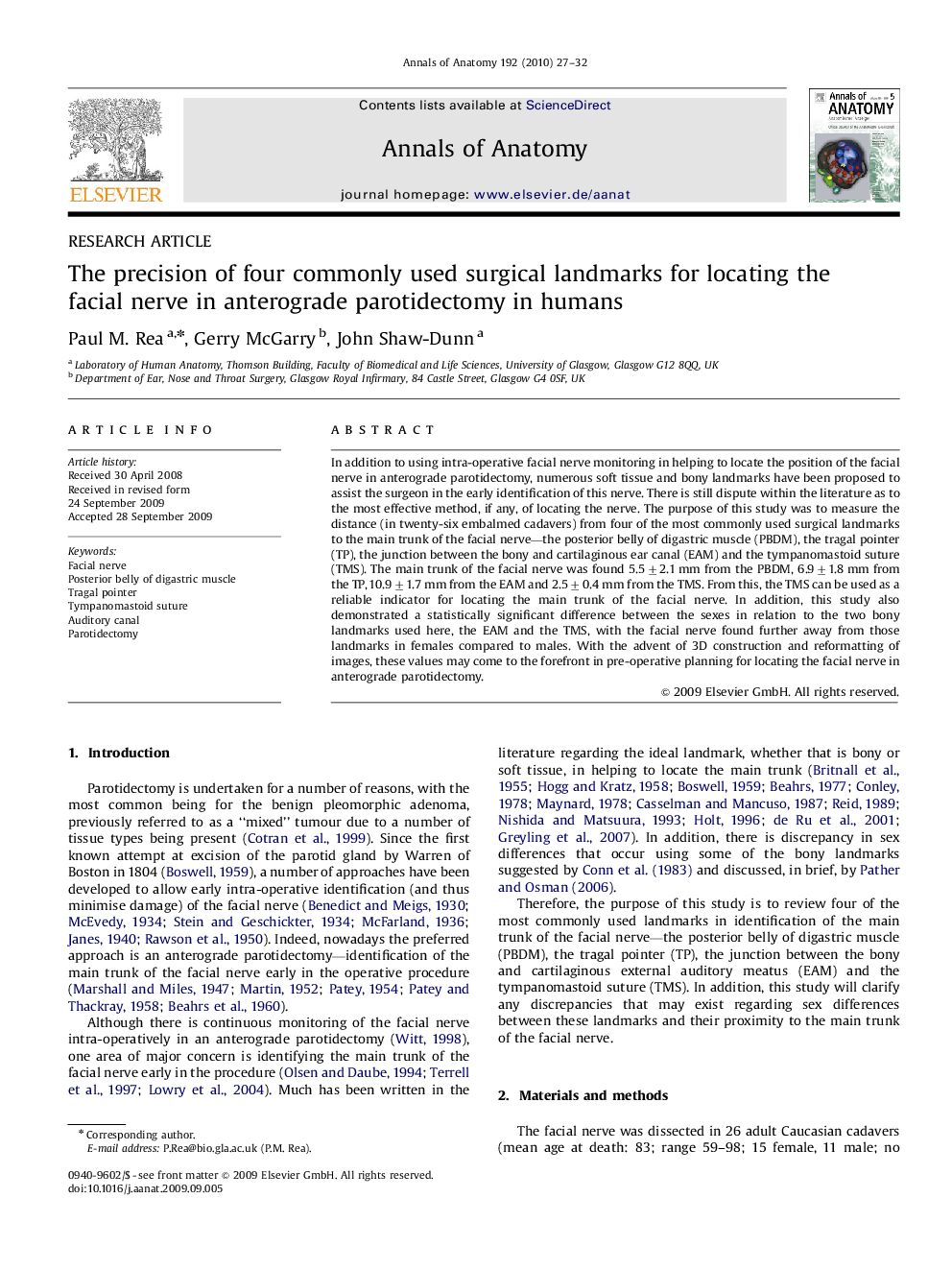| Article ID | Journal | Published Year | Pages | File Type |
|---|---|---|---|---|
| 8462309 | Annals of Anatomy - Anatomischer Anzeiger | 2010 | 6 Pages |
Abstract
In addition to using intra-operative facial nerve monitoring in helping to locate the position of the facial nerve in anterograde parotidectomy, numerous soft tissue and bony landmarks have been proposed to assist the surgeon in the early identification of this nerve. There is still dispute within the literature as to the most effective method, if any, of locating the nerve. The purpose of this study was to measure the distance (in twenty-six embalmed cadavers) from four of the most commonly used surgical landmarks to the main trunk of the facial nerve-the posterior belly of digastric muscle (PBDM), the tragal pointer (TP), the junction between the bony and cartilaginous ear canal (EAM) and the tympanomastoid suture (TMS). The main trunk of the facial nerve was found 5.5±2.1 mm from the PBDM, 6.9±1.8 mm from the TP, 10.9±1.7 mm from the EAM and 2.5±0.4 mm from the TMS. From this, the TMS can be used as a reliable indicator for locating the main trunk of the facial nerve. In addition, this study also demonstrated a statistically significant difference between the sexes in relation to the two bony landmarks used here, the EAM and the TMS, with the facial nerve found further away from those landmarks in females compared to males. With the advent of 3D construction and reformatting of images, these values may come to the forefront in pre-operative planning for locating the facial nerve in anterograde parotidectomy.
Related Topics
Life Sciences
Biochemistry, Genetics and Molecular Biology
Cell Biology
Authors
Paul M. Rea, Gerry McGarry, John Shaw-Dunn,
